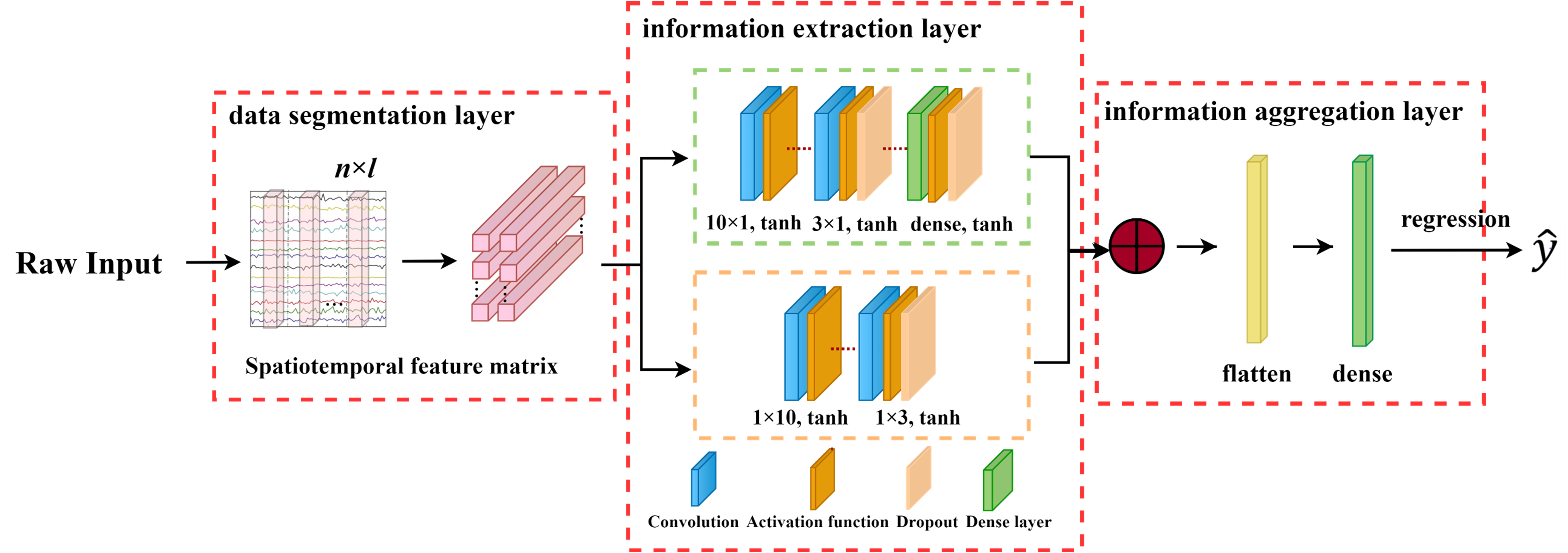
The architecture of the proposed model.
Studies that apply deep learning (DL) methods to maintenance support systems have achieved many successes because degradation patterns and remaining useful life (RUL) of critical equipment can be described and predicted by DL techniques. However, mining spatial and temporal dependencies from multivariate sensor signals and fusing spatiotemporal features sufficiently are challenging tasks.
A research team from Shenyang Institute of Automation (SIA) of the Chinese Academy of Science (CAS) proposed a novel spatiotemporal feature learning-based framework, where the data are first segmented and an augmented matrix is constructed to form the featured information containing spatial dependencies and temporal correlations. To represent and mine spatiotemporal relationships based on the production semantics, the information extraction layer and the information aggregation layer are designed, in which typical units are defined by a double deep CNN architecture with spatial and temporal kernels.
Detailed experiments and analysis were conducted on the C-MAPSS dataset and the PHM2010 dataset demonstrating that the proposed model achieves the best comprehensive performance than previous state-of-the-art methods.
The study was published online in Measurement.